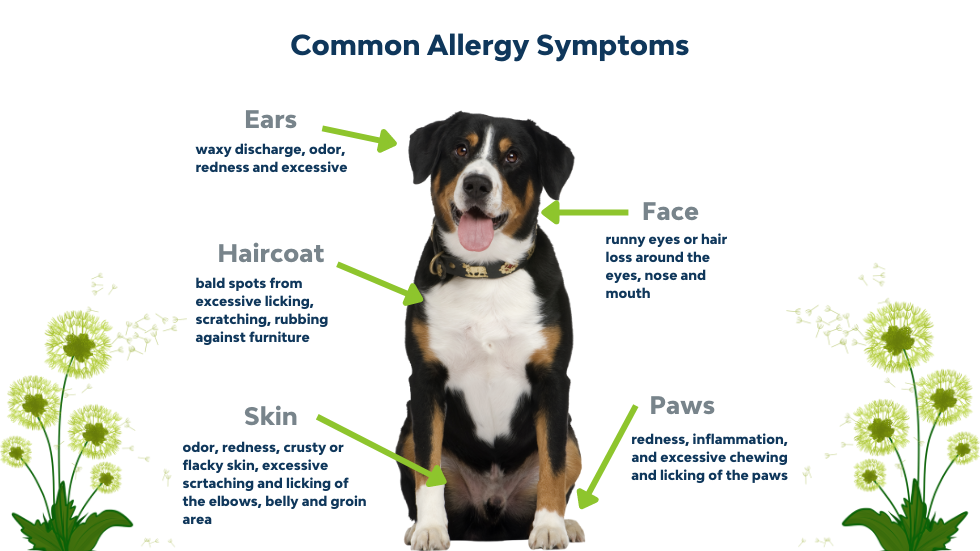Spring means allergy season is here! Did you know your beloved four-legged friend can be susceptible to seasonal allergies just like you? Dogs and cats can be allergic to pollen, spores, and other allergens that appear in the environment seasonally. An allergic reaction occurs when the body responds to a substance in the environment that is typically harmless. In the spring, trees, grasses, and weeds release tiny grains into the air to fertilize other plants. When they get into the nose of a dog or cat who’s allergic, they send the body’s defenses haywire.
By far, the most common sign of allergy in dogs and cats is itchy skin. In addition, other signs of allergy include excessive licking, biting, rubbing, hot spots, recurrent ear infections and/or skin infections. Allergen exposure occurs in pets mainly by absorption through the skin. This is why areas that contact the ground and those without fur are more affected.
Avoidance of pollen is impractical, but absorption can be minimized by some of the following:
1. Limit time outside during high pollen counts and on windy days.
2. Vacuuming and dusting more frequently can reduce pollen in the house.
3. Use air conditioning instead of keeping windows open.
4. Keep your pet off freshly mowed grass.
5. Wipe your pet down, or bathe, after being outside to remove pollen from their coat.
6. Dry bedding in the dryer instead of hanging it outside during pollen season.
If your pet is experiencing symptoms that are making them miserable, ask your family veterinarian if a referral to our Dermatology and Allergy department is in order. At your appointment, our dermatologist can find the cause of your pet’s allergy and help desensitize them against pollen and other environmental allergens. This way, the progression of allergies to a more severe condition can be prevented, your pet gets a thorough diagnosis, and the right treatment that best suits their needs and long-term health can begin.

